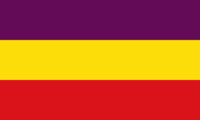Slavonjans: Difference between revisions
No edit summary |
No edit summary |
||
| Line 3: | Line 3: | ||
| native_name = | | native_name = | ||
| native_name_lang = | | native_name_lang = | ||
| flag = [[File: | | flag = [[File:Slavonjan_Culture_Flag.png |200px|border]] | ||
| flag_caption = | | flag_caption = Traditional Flag of the Slavonjan People | ||
| total = 7,154,983 (2018 census) | | total = 7,154,983 (2018 census) | ||
| total_year = | | total_year = | ||
| Line 11: | Line 11: | ||
| genealogy = | | genealogy = | ||
| regions = [[Slavonje]], Southern [[Sylvania]] | | regions = [[Slavonje]], Southern [[Sylvania]] | ||
| languages = [[wikipedia:Serbian language|Serbian | | languages = [[Slavonjan]], [[wikipedia:Serbian language|Serbian]] | ||
| philosophies = | | philosophies = | ||
| religions = Orthodox Christian | | religions = Orthodox Christian | ||
| related_groups = [[Corians]] [[Šlovedks]] | | related_groups = [[Corians]] [[Šlovedks]] [[Anticans]] | ||
| footnotes = | | footnotes = | ||
}} | }} | ||
'''Slavonjans''' are a | '''Slavonjans''' are a Slavic, orthodox group, who for the most part live within the Southern region of [[Krasnarus]] in the [[Slavonje|District of Slavonje]]. | ||
==History== | ==History== | ||
Slavonjans originated from the Northwestern region of [[Apollonia]]. But, due to some unknown reason, they were forced to migrate south. Although a Slavonjan state was proposed, it never | Slavonjans originated from the Northwestern region of [[Apollonia]]. But, due to some unknown reason, they were forced to migrate south. Although a Slavonjan state was proposed, it never came to fruition. Despite this, they remained to settle within what would become southern Krasnarus, where they began to build small villages. They soon became very wise of the region's climate and began using the land to farm crops. Although in recent time Slavonjans began to feel the ripples of poverty. Despite all of the hardships they have endured, they are still a very strong and proud group of people. | ||
==Census== | ==Census== | ||
As of a July 2018 census, there are a reported 7,154,983 Slavonjans residing within Krasnarus. | As of a July 2018 census, there are a reported 7,154,983 Slavonjans residing within Krasnarus. | ||
Revision as of 23:56, 12 August 2018
 Traditional Flag of the Slavonjan People | |
| Total population | |
|---|---|
| 7,154,983 (2018 census) | |
| Regions with significant populations | |
| Slavonje, Southern Sylvania | |
| Languages | |
| Slavonjan, Serbian | |
| Religion | |
| Orthodox Christian | |
| Related ethnic groups | |
| Corians Šlovedks Anticans |
Slavonjans are a Slavic, orthodox group, who for the most part live within the Southern region of Krasnarus in the District of Slavonje.
History
Slavonjans originated from the Northwestern region of Apollonia. But, due to some unknown reason, they were forced to migrate south. Although a Slavonjan state was proposed, it never came to fruition. Despite this, they remained to settle within what would become southern Krasnarus, where they began to build small villages. They soon became very wise of the region's climate and began using the land to farm crops. Although in recent time Slavonjans began to feel the ripples of poverty. Despite all of the hardships they have endured, they are still a very strong and proud group of people.
Census
As of a July 2018 census, there are a reported 7,154,983 Slavonjans residing within Krasnarus.